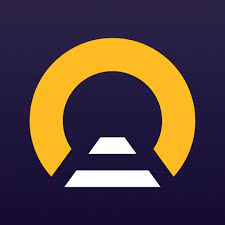After I returned from my most recent trip to Europe and Israel, I decided put together a spreadsheet of the stamps in my passports. Like so much of my life, I start late and then become obsessed. I got my first passport just after my 44th birthday in 1997. I had been overseas before that. I was stationed in Germany for three years with the U.S. Army and had seen a lot of Germany and some of France and Portugal with no passport. American soldiers could travel Western Europe without a passport during the Cold War.
The second reason I persisted in putting together the 170-line document is that I have a five-year gap in my bicycling records, in fact in all of my records. I started riding a bicycle seriously in 1988 two years after I quit smoking. In 1989, I started keeping track of miles and races and big ride. From 1989 to 1996 I have paper logs I got from Runners World magazine every year.
Then in 1997 I started using Microsoft Excel to keep track of mileage. In 2002 I switched from a PC to a Mac and somewhere in my digital history I managed to lose all records and files from 1997 to 2001. I have a lovely spreadsheet of all my miles from 2002 to 2017.
In that five-year period from 1997 to 2001 were some of the best rides I ever had. Although passport stamps have their own problems as records, the stamps from trips gave me a pretty good record of where I was which has helped me to reconstruct some of the memories of that time.
Between April 1998 and November 2000, I worked for a multinational company whose main product was white pigment. During those 2-1/2 years I traveled to seventeen countries on five continents--I was supposed to go to Africa on one trip, but the trip got cancelled--traveling nearly every month for a total of 28 trips I could piece together from the stamps. On all but two of the trips, I took a road bike with me. Before September 2001, taking a bike was free on an overseas trip and only $50 per flight in America. There was still the hassle of oversized baggage, but no charge back then.
Five of the trips were Round the World trips, usually somewhere in Europe first, then Singapore, Australia and/or Hong Kong, then back to America. Two of the trips were more than half-way round the world going from the US to Europe to South America then back to America. I also made trips directly to Asia and back: to Beijing, Shanghai and Singapore.
According to the passport stamps, the top countries I have visited are France, Germany, the UK, Brazil, China, Singapore and Hong Kong. For each of these countries I have more than ten stamps. But I have made more trips to Italy than all but the top three countries and I only have two stamps. I have, for instance, been to Turin, Italy five times since 1999, but I have traveled there from France twice in a train through the Alps (an amazing trip), twice in a car and once in a regional jet. I went to Florence and Padua by driving from Switzerland--no passport stamps.
I have been to eighteen countries for which I have no passport stamp. Many of the 53 countries I have visited are in the European Union. Some I passed through in a car or on a bicycle or a train and never passed through customs. I have no stamp for Portugal, Ireland, Andorra, Monaco, Luxembourg, Switzerland, Kosovo, Slovakia, the Czech Republic, Finland, Lithuania or Estonia.
During my first long overseas ride in 2017, somewhere between Serbia and Ukraine, I quit keeping tracking of mileage. I became a regular user of Strava. I got so much data out of Strava that keeping spreadsheet seemed redundant.
I'll write about rides I can fill in using passport and other travel information I have. With coronoa virus, it could be a while before I add more stamps to my current passport.


















